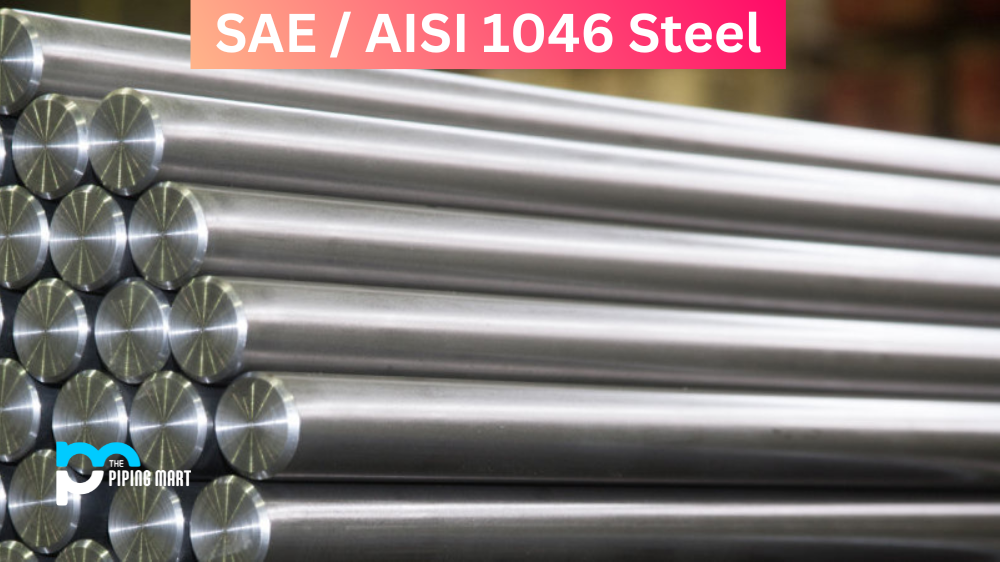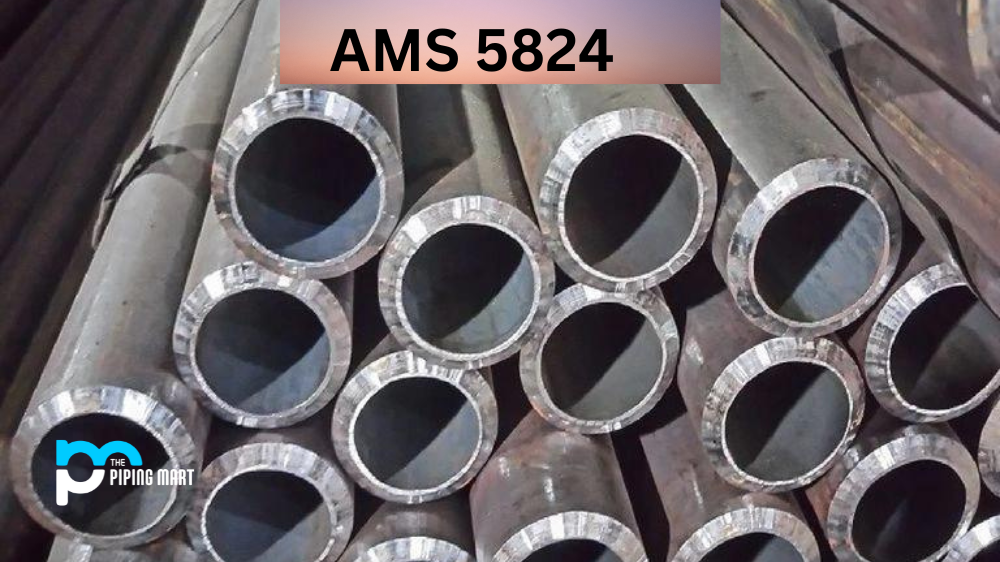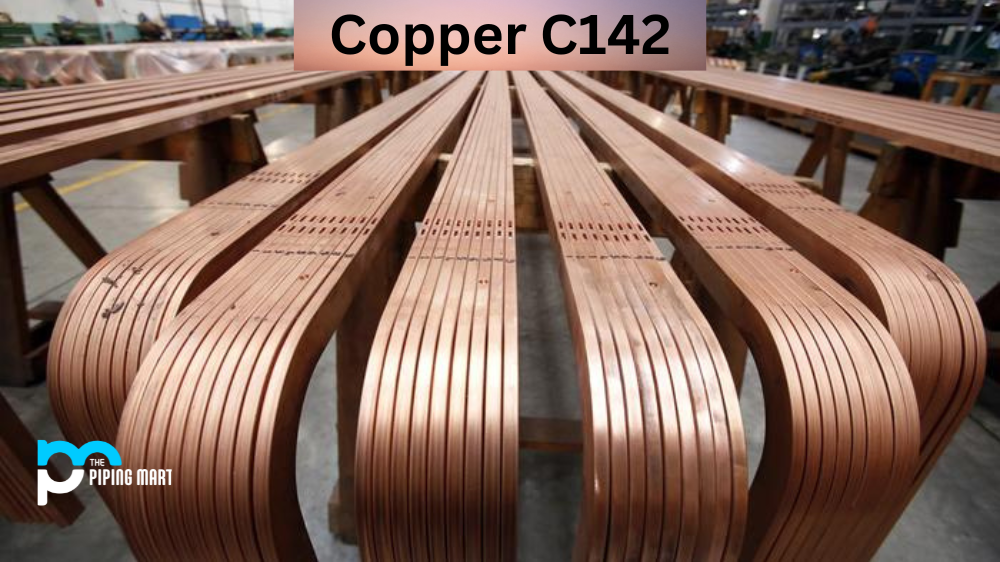SAE/AISI 1046 steel is a versatile alloy of carbon and iron that has been used in a wide variety of applications for centuries. Thanks to its corrosion-resistant properties, heat resistance, and machinability, SAE / AISI 1046 steel is still in use today in a wide range of industries. Let’s take a closer look at some of the most common uses for SAE / AISI 1046 steel.
1046 Steel Composition
| Element | Content (%) |
|---|---|
| Iron, Fe | 98.41 – 98.88 |
| Manganese, Mn | 0.70 – 1.0 |
| Carbon, C | 0.420 – 0.50 |
| Sulfur, S | ≤ 0.050 |
| Phosphorous, P | ≤ 0.040 |
1046 Steel Physical Properties
| Properties | Metric | Imperial |
|---|---|---|
| Density | 7.85 g/cc | 0.284 lb/in³ |
1046 Steel Mechanical Properties
| Properties | Metric | Imperial |
|---|---|---|
| Tensile strength | 650 MPa | 94300 psi |
| Yield strength | 545 MPa | 79000 psi |
| Bulk modulus (typical for steel) | 140 GPa | 20300 ksi |
| Shear modulus (typical for steel) | 80.0 GPa | 11600 ksi |
| Elastic modulus | 190-210 GPa | 27557-30458 ksi |
| Poisson’s ratio | 0.27-0.30 | 0.27-0.30 |
| Elongation at break (in 50 mm) | 12% | 12% |
| Reduction of area | 35% | 35% |
| Hardness, Brinell | 187 | 187 |
| Hardness, Knoop (converted from Brinell hardness) | 209 | 209 |
| Hardness, Rockwell B (converted from Brinell hardness) | 90 | 90 |
| Hardness, Rockwell C (converted from Brinell hardness. Value below normal HRC range, for comparison purposes only) | 10 | 10 |
| Hardness, Vickers (converted from Brinell hardness) | 196 | 196 |
| Machinability (based on AISI 1212 steel. as 100 machinability.) | 55 | 55 |
1046 Steel Thermal Properties
| Properties | Metric | Imperial |
|---|---|---|
| Thermal expansion co-efficient (@ 0-100°C/32-212°F) | 11.5 µm/m°C | 6.39 µin/in°F |
| Thermal conductivity | 49.8 W/mK | 346 BTU in/hr.ft².°F |
1046 Steel Equivalents
- ASTM A29
- ASTM A510
- ASTM A576
- ASTM A830
- SAE J1397
- SAE J403
- SAE J412
- SAE J414
1046 Steel Uses
One of the most popular uses for AISI 1046 steel is in the automotive industry. Thanks to its corrosion-resistant properties, SAE 1046 steel is often used to make car body panels and other auto parts. The steel’s heat resistance makes it ideal for exhaust systems, while its machinability makes it easy to fabricate parts with complex shapes.
Grade 1046 steel is also widely used in the construction industry. This is thanks to its excellent weldability, making it easy to combine pieces of alloy 1046 steel-based metalwork. The steel’s corrosion resistance means that it can be used in outdoor applications without fear of rusting, while its heat resistance makes it ideal for use in boiler construction and other high-temperature applications.
Corrosion Resistance
SAE/AISI 1046 steel is a versatile material due to its high corrosion resistance and strength. With a higher carbon content than most other similarly-rated materials, SAE/AISI 1046 has the ability to resist both low and high temperatures, making it suitable for many outdoor applications.
Heat Resistance
The SAE/AISI 1046 steel alloy offers reliable heat resistance in a variety of industrial settings and applications. Its high carbon content and ability to reach very high temperatures without losing its strength make it an ideal choice for engineering projects that involve conditions requiring extreme thermal endurance. For example, these properties allow the alloy to be used in applications such as furnace rolls, turbines and piston components. Ultimately, this special grade of steel is sure to continue providing dependable high-temperature performance across many industries.
Heat Treatment
Heat treatment of SAE/AISI 1046 steel can significantly improve its properties, allowing it to be used for a wider range of applications. With proper heating and cooling, the yield strength and ductility of this steel can be increased significantly, making it a highly versatile metal suitable for a broad range of engineering projects.
Machining
Machining SAE / AISI 1046 steel can be a very difficult task, but it also holds incredible rewards when it is done correctly. The strength and ductility of this steel make it well-adapted for use in the construction of parts that must withstand significant pressures and stresses. Although 1046 steel is much more difficult to cut than others, tools and plans specifically designed for its machining can lead to projects with intricate detailing that rivals any other material. With patience and attention to detail, machining SAE/ AISI 1046 steel can be both challenging and immensely rewarding.
Welding
Welding SAE / AISI 1046 steel requires a delicate balancing act to ensure success. This relatively simple alloy is composed of only 0.45% carbon, but its low hardenability makes the material more susceptible to cracking while welding. To avoid this issue, an experienced welder uses preheating techniques at temperatures between 300°F and 600°F prior to welding as well as keeping the inter pass temperature below 300°F. Trained welders are also aware that hydrogen-controlled electrodes are necessary for welding SAE / AISI 1046 due to the high penetration of the arc caused by its low carbon content. With these techniques in mind and proper preparation, welding projects with SAE / AISI 1046 can result in strong, reliable joint structures.
Conclusion
As you can see, SAE / AISI 1046 steel is a versatile alloy with a wide range of uses. Thanks to its combination of corrosion resistance, heat resistance, machinability, and weldability, SAE / AISI 1046 steel is still in use today in many different industries. If you’re looking for a durable and versatile alloy for your next project, SAE / AISI 1046 steel may be a perfect choice.

Abhishek is a seasoned blogger and industry expert, sharing his insights and knowledge on various topics. With his research, Abhishek offers valuable insights and tips for professionals and enthusiasts. Follow him for expert advice on the latest trends and developments in the metal industry.




